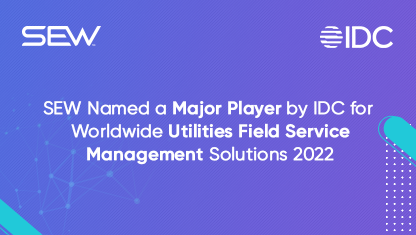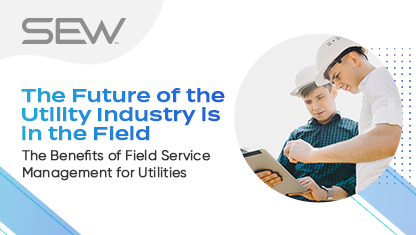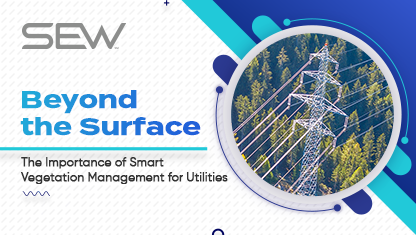
Entering the Multiverse of Mixed Reality: A New Era in Utility Field Services
In 2003, futurist Ray Kurzweil predicted: “By the 2030s, virtual reality will be totally realistic and compelling, and we will spend most of our time in virtual environments. We will all become virtual humans.” Today, we are already witnessing the convergence of physical and virtual worlds in ways that were once unimaginable. From immersive gaming experiences to virtual meetings, the line between real and virtual worlds is becoming increasingly blurred.
Mixed reality (MR) technology merges both the physical and digital worlds, encompassing virtual reality (VR), augmented reality (AR), and everything in between. It overlays digital information and objects in the real world, providing users with a deeply immersive experience. Its broad potential spans multiple sectors, from gaming and entertainment to manufacturing, telecom, healthcare, retail, and even field services.
For utilities, digital technology disruptions have opened up opportunities to address evolving consumer expectations, clean energy adoption strategies, changing regulatory landscape, and the need to reduce operational costs while improving efficiency. The utility industry’s future with mixed reality (MR) looks promising. The potential of MR in utility field service is extensive, offering significant advantages in installing, maintaining, and repairing complex infrastructure systems like power grids, water pipelines, and telecommunication networks. Field service operations in the utility industry require skilled technicians to troubleshoot and fix complex issues, making MR technology highly beneficial.
According to a survey, by 2025, more than 50% of field service management deployments will include mobile augmented reality collaboration and knowledge-sharing tools. These tools can be deployed using mobile devices already available to utilities, such as smartphones, tablets, and rugged laptops. Wearables such as smart glasses or head-mounted units will also become common as technology develops.
Empowering the Utility Workforce with Mixed Reality Technology
Mixed Reality (AR and VR) technology has the potential to revolutionize the way field service technicians work in the utility sector. By merging the physical and digital worlds, MR offers several benefits that can improve workforce efficiency, safety, and customer satisfaction. Here’s a look at some key benefits for the industry:
- Reduced travel time and cost: Utility field service technicians can save time and money on travel expenses by remotely accessing sites or assets using Mixed Reality technology. This also enables them to quickly diagnose issues and determine whether a site visit is necessary or the problem can be resolved manually.
- Improved workforce efficiency and accuracy: Mixed Reality technology can improve the efficiency and accuracy of utility field workers by providing them with real-time data and detailed instructions for troubleshooting and fixing problems. Additionally, MR can provide technicians with access to a wealth of information, including schematics, blueprints, and manuals, enabling them to make more informed decisions and improve productivity.
- Enhanced safety of field workforce: Mixed Reality can improve the safety of the field workforce by providing technicians with necessary safety information and guidelines, reducing the risk of accidents and injuries while working in hazardous utility environments.
- Remote collaboration and virtual training: Mixed Reality allows field technicians to collaborate with experts remotely, improving their ability to receive additional guidance and support. Additionally, MR can provide field workers access to immersive virtual training sessions, enabling them to acquire new skills and upskill in a safe environment. This gives workers a chance to practice technical and soft skills, further improving the quality of their training.
- Improved customer satisfaction: By providing customers with real-time updates on repair work and virtual tours of infrastructure systems, Mixed Reality enhances customer understanding and confidence in the work being done by the utility company.
- Hands-free operations: MR allows field technicians to operate hands-free during various field tasks, including visual inspection, task debriefing, task viewing, or listening to workflow instructions. This allows technicians to focus on the task, even in challenging and hazardous environments.
When Virtual Meets Physical Reality in the Utility Industry
Apart from the benefits we discussed, Mixed Reality technology has particular use cases developed in recent years for the utility industry:
- Asset Maintenance and Damage Assessment:
A primary use case of MR technology in the utility field service industry is for asset maintenance, damage assessment, troubleshooting, and restoration. By overlaying a 3D model of a part onto the equipment, field technicians can quickly find information such as asset type, part number, maintenance history, and operations manual.
With this information, the technician can assess the equipment’s condition, order a replacement part immediately, or consult another off-site technician to fix the problem. In emergencies, the use of MR can allow hands-free access to data using natural voice commands to detail the damage, including data, images, videos, etc., using an AR headset. This improves the field worker’s productivity and reduces the time to restore the outage.
- Visual Vegetation Inspection:
Utilities control and remove vegetation that grows near their transmission and distribution lines. To do this, field workers usually use mobile apps to collect and monitor vegetation clearance data. However, MR technology can enhance this process by providing field workers access to historical information on the go and allowing them to collect data hands-free using a voice-based interface.
For example, an application can allow line workers to view the tree canopy and brush while overlaying visual cues that help them determine when and where to trim vegetation and identify potential risks such as tree falls.
- Using MR in Integration with GIS:
By combining MR technology with a geographical information system (GIS), utilities can quickly locate specific digging areas, monitor assets, and navigate rugged terrain more efficiently. By digitally visualizing the site, utility workers can overlay software to understand the underground supply infrastructure and nearby obstacles. This enables them to solve problems quickly and safely.
For instance, during the construction or replacement of an underground gas pipeline, it is critical to locate assets accurately and perform tasks like excavation and other maintenance activities safely. Using MR technology, the information about the underground pipeline and connected assets can be shown using a 3D model with accurate GPS locations. Workers can view the last repair or replacement history and obtain necessary insights to avoid hurdles or rework and improve job quality.
Mixed reality technology – a game-changer in field service operations for utilities. Imagine going hands-free, receiving real-time information, and having an intuitive interface right before your eyes. That’s what mixed reality can bring to the table –improving safety, efficiency, and quality of work and setting new standards for innovation in the field. As this tech evolves, the possibilities for creative applications are endless, making it a surefire way for utilities to gain a competitive edge and deliver top-notch outcomes for customers, the workforce, and stakeholders.
SEW’s Smart Mobile Workforce (SMW®) is the #1 Digital Workforce Experience (WX) platform for energy, water and gas providers, worldwide. SMW® helps in intelligently managing the field operations to make the service experiences effortless for the end customers. From work order management to AI/ML-based schedule and dispatch, SMW® delivers real-time visibility into workforce with simple, intuitive platform experiences, improves operational efficiency and assures seamless service delivery.






